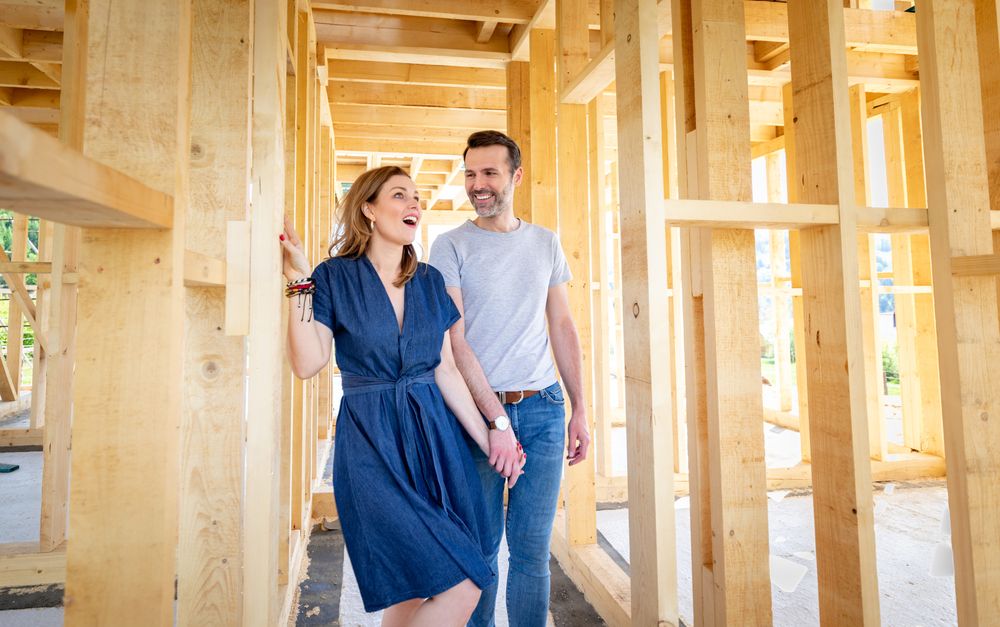
Welcome to the forefront of residential architecture and building science, where the future of home construction is unfolding with incredible innovations and trends that promise to redefine the way we live. As prospective home buyers or those simply intrigued by the evolution of our living spaces, understanding where home construction is headed is not only fascinating but also essential in making informed decisions about our future homes.
Sustainable Building Materials
The construction industry is experiencing a paradigm shift towards sustainability, and one of the most significant trends is the use of eco-friendly materials. The future of home construction is not just about creating beautiful spaces; it’s about doing so responsibly. Sustainable building materials are at the forefront of this change. From bamboo flooring to recycled steel beams, the focus is on resources that are renewable, have low environmental impact, and promote energy efficiency.
One of the most promising developments is the innovation of bio-based materials. These include hempcrete, which is a lightweight, insulating material that can replace concrete and is much kinder to the environment. Similarly, the use of reclaimed wood not only adds a touch of rustic charm but also reduces the demand for new timber. In the future, we can expect to see more homes built with these sustainable materials as standard practice, offering homeowners a way to live in harmony with nature while enjoying modern comforts.
Smart Home Technology Integration
The concept of the smart home has evolved from a luxury to a mainstream expectation in new construction. Future homes will not just contain a couple of smart devices; they will be built around integrated technology systems that enhance comfort, security, and energy efficiency. From smart thermostats and lighting to advanced security systems and appliances, technology is becoming an intrinsic part of the home.
The integration of the Internet of Things (IoT) means that these devices can communicate with one another, creating a seamless and intuitive user experience. Imagine a home that learns your routine, adjusting heating and lighting to your preferences while minimizing energy waste. Or consider the convenience of voice-controlled systems that manage everything from your entertainment setup to your grocery list. As buyers, understanding the capabilities and potential of these technologies is crucial in selecting a home that will remain compatible with future innovations.
Advanced Construction Techniques
The methods used to build homes are also changing, incorporating advanced techniques that improve efficiency, durability, and design possibilities. One such technique is 3D printing, which allows for the construction of complex designs that would be difficult or impossible to achieve with traditional methods. It also significantly reduces waste, as the printing process only uses the necessary amount of material.
Another innovative technique is modular construction. Prefabricated sections of a home are built off-site in a controlled environment, which not only speeds up the construction process but also enhances quality control. Once completed, these modules are transported to the building site and assembled, drastically reducing the time it takes to move into your new home.
Energy Efficiency and Green Technology
As the world becomes increasingly aware of the importance of energy conservation, future homes are being designed to be as energy-efficient as possible. This includes everything from the installation of solar panels and geothermal systems to the incorporation of passive house principles, which optimize insulation, air tightness, and solar gain to minimize energy use.
These technologies not only reduce the carbon footprint of a house but also offer significant cost savings over time. Energy-efficient homes often come with the added benefit of improved indoor air quality and comfort, as they maintain more consistent temperatures and reduce drafts. As energy prices continue to fluctuate, investing in a home with green technology is a wise choice for both the environment and your wallet.
Design for Adaptability and Longevity
Finally, the future of home construction is about creating spaces that can adapt to our changing needs over time. This means designing homes with flexible floor plans that can evolve as the occupants’ lifestyles change. For instance, a home might include an office space that can be easily converted into a nursery or a bedroom that can later serve as a hobby room.
In addition to adaptability, there is a focus on building homes that will stand the test of time. This involves not only using high-quality, durable materials but also designing for ease of maintenance and repair. A home that is built to last, with the flexibility to accommodate various life stages, is a home that provides true long-term value.
The future of home construction is bright with promise and potential. As buyers, we have the opportunity to invest in homes that are sustainable, technologically advanced, energy-efficient, and adaptable to our evolving needs. By staying informed about these innovations and trends, we can make choices that not only benefit us personally but also contribute to a more sustainable and innovative future for residential construction. Whether you are in the market for a new home or simply dreaming of the possibilities, the future is here, and it’s built with you in mind.
